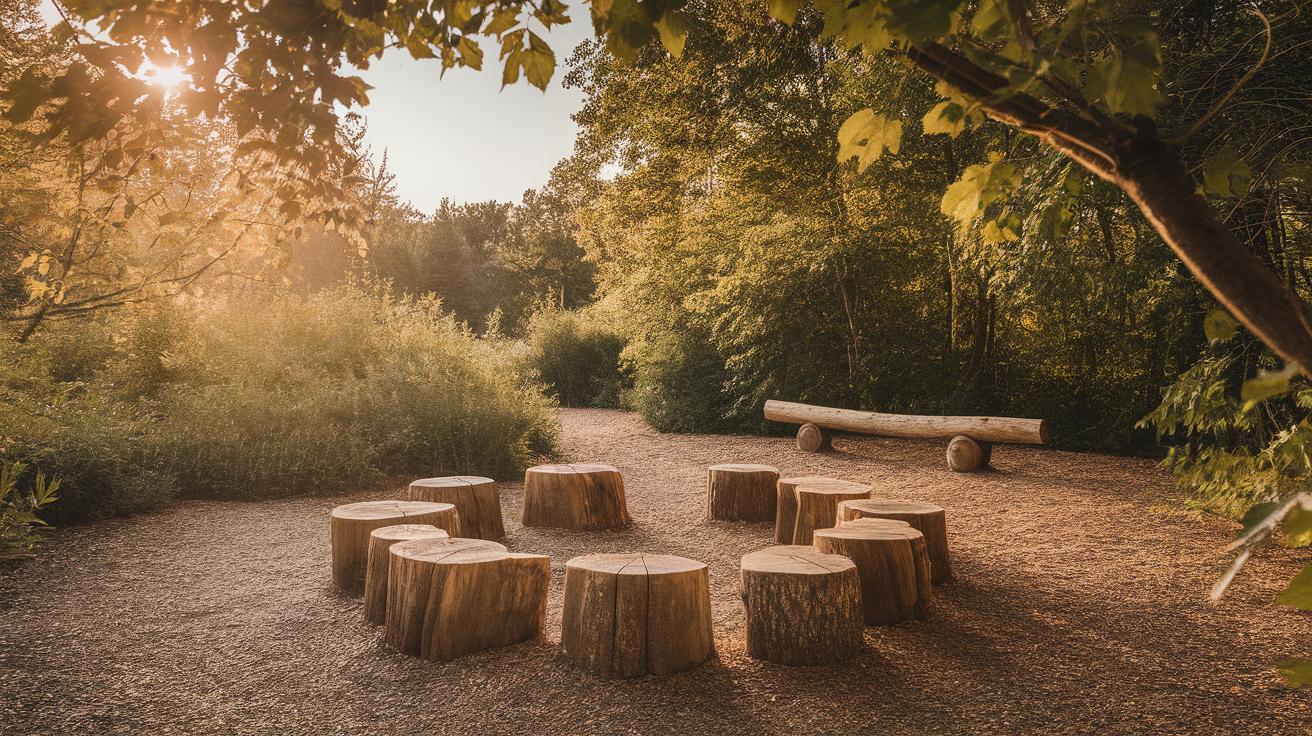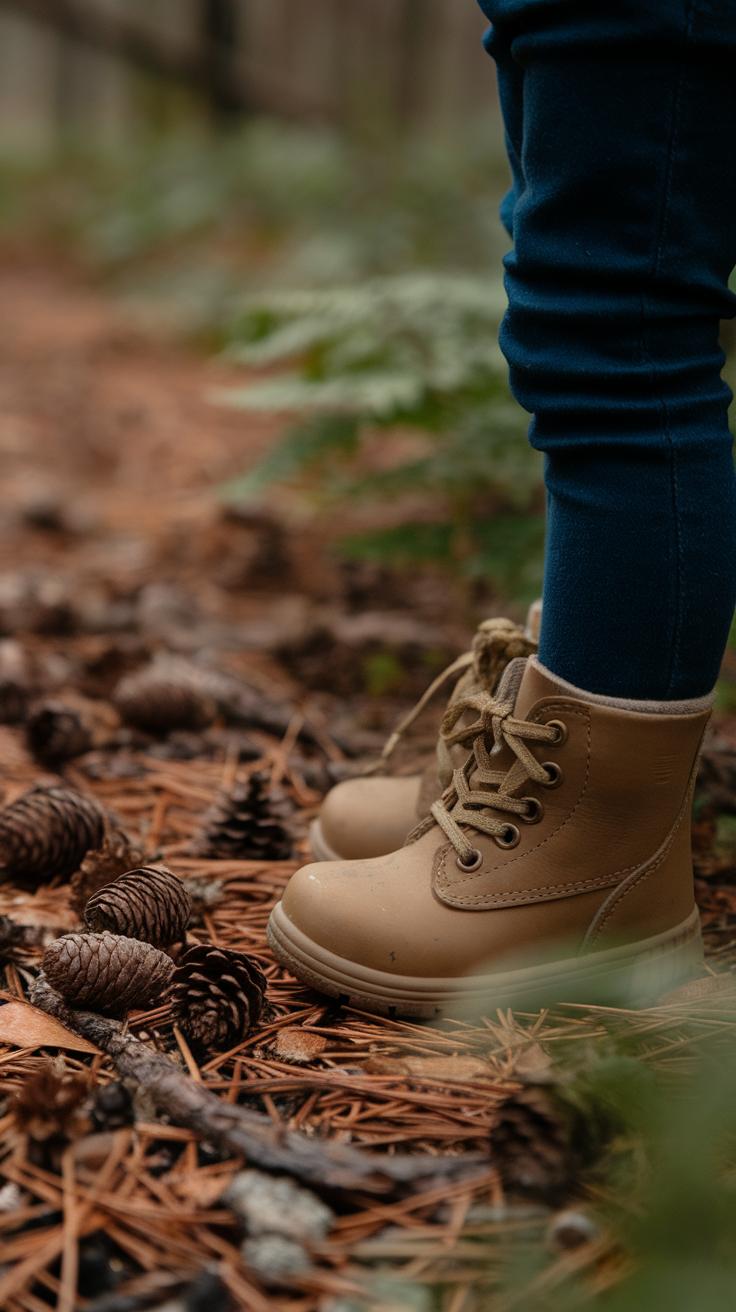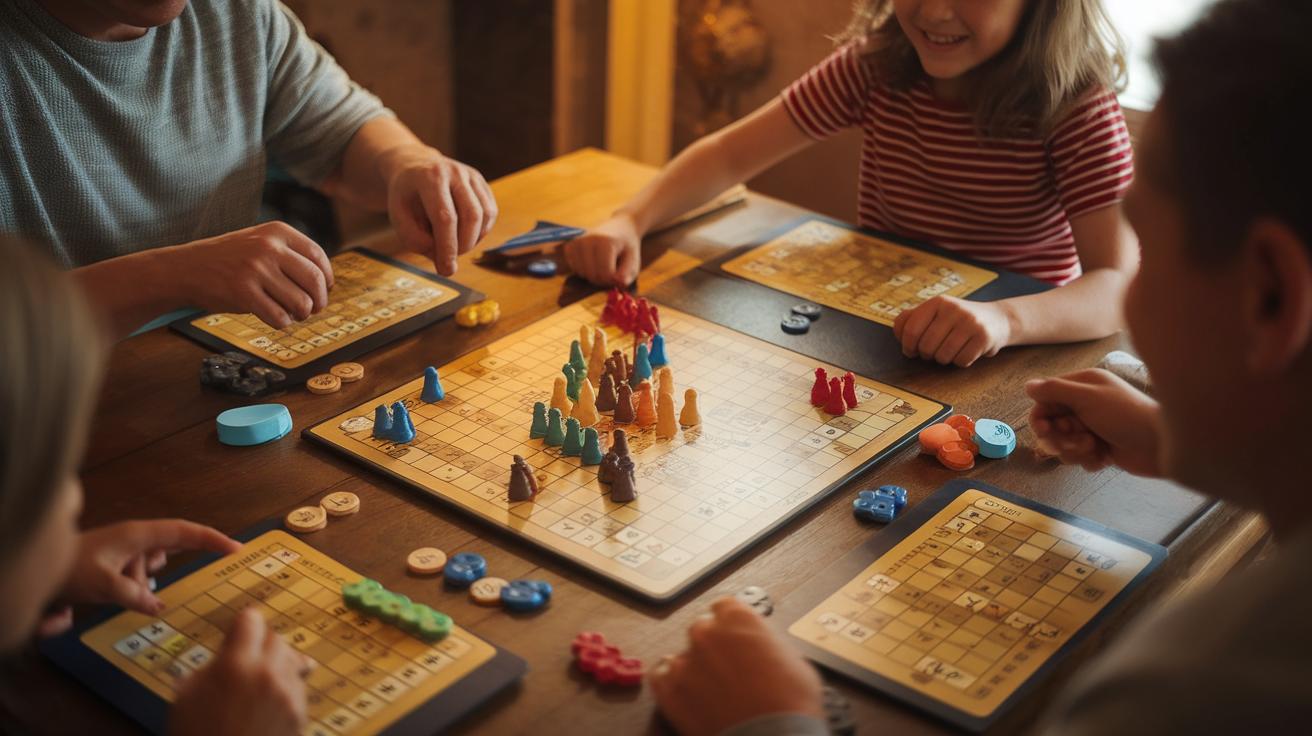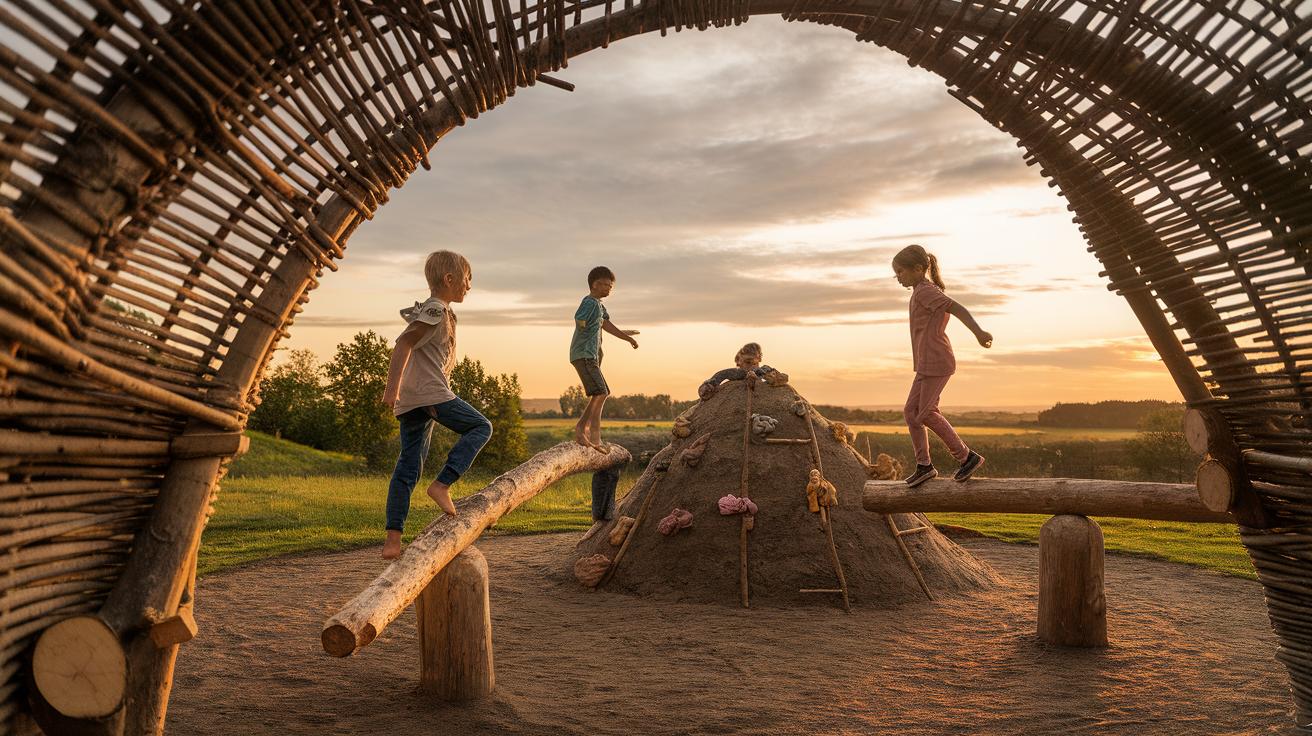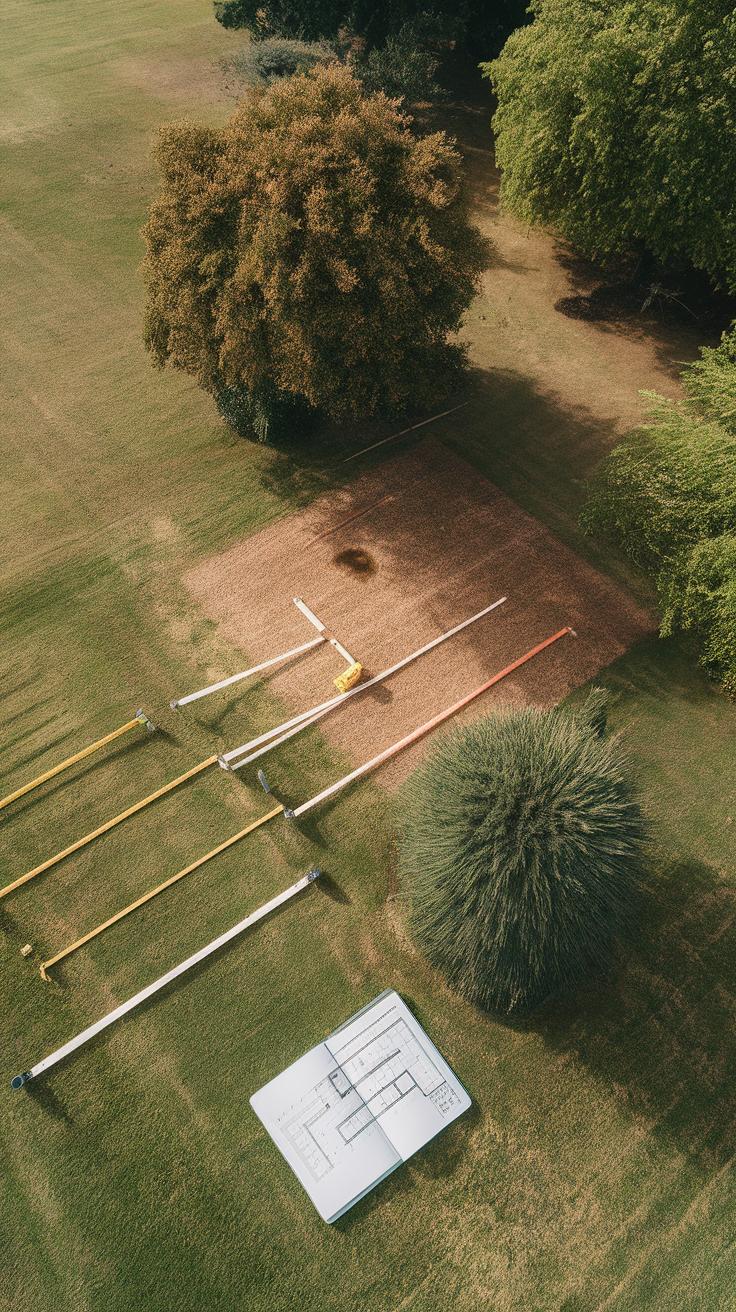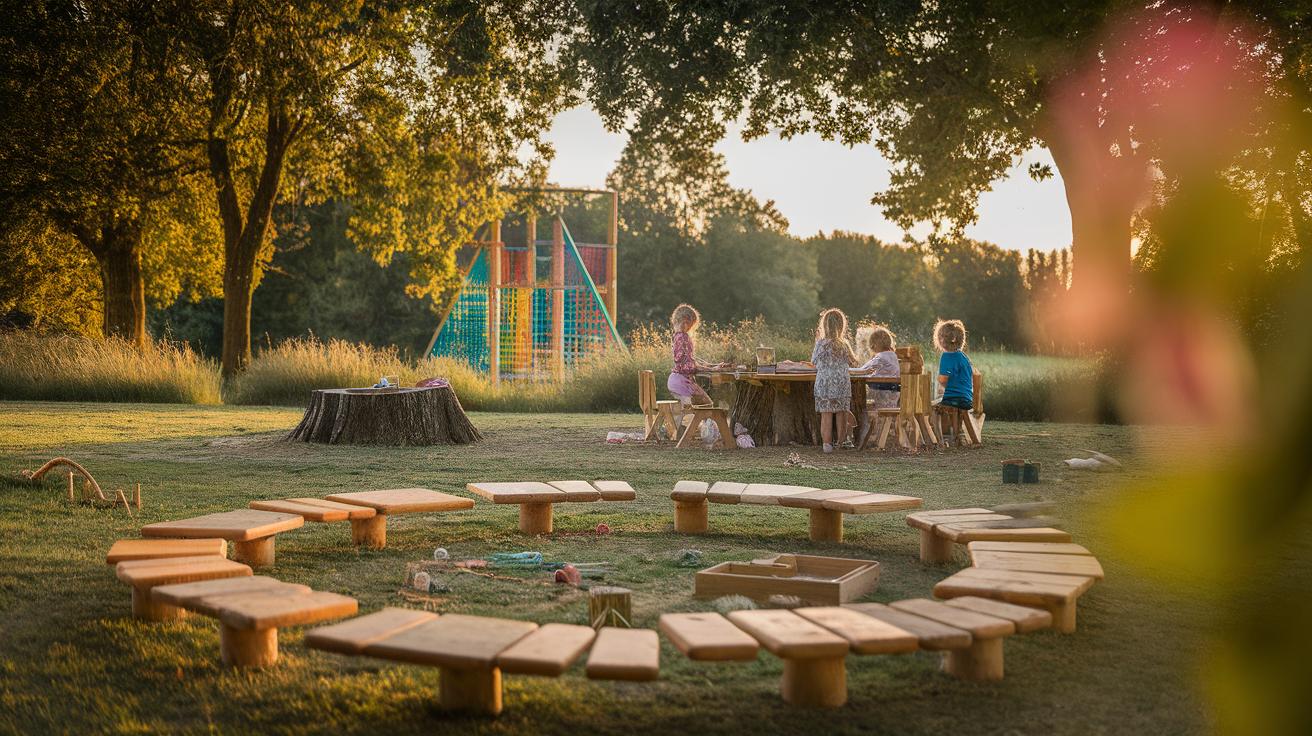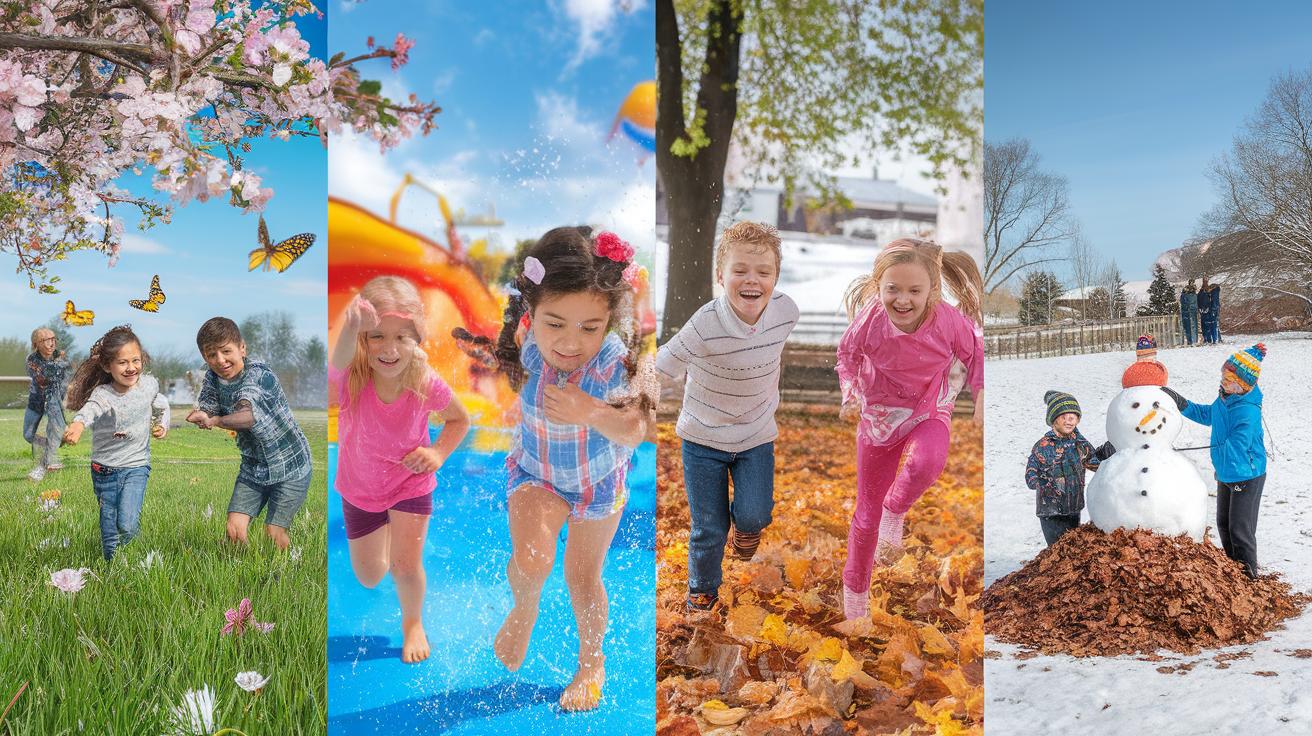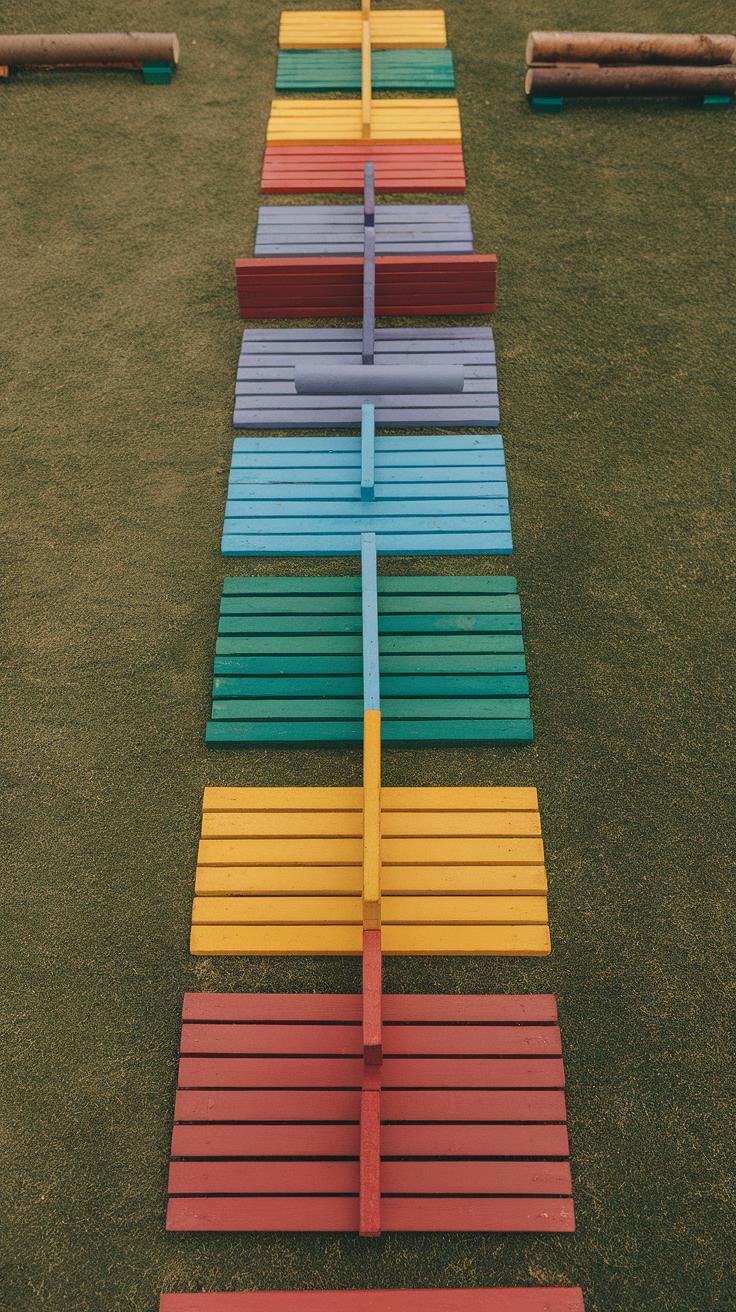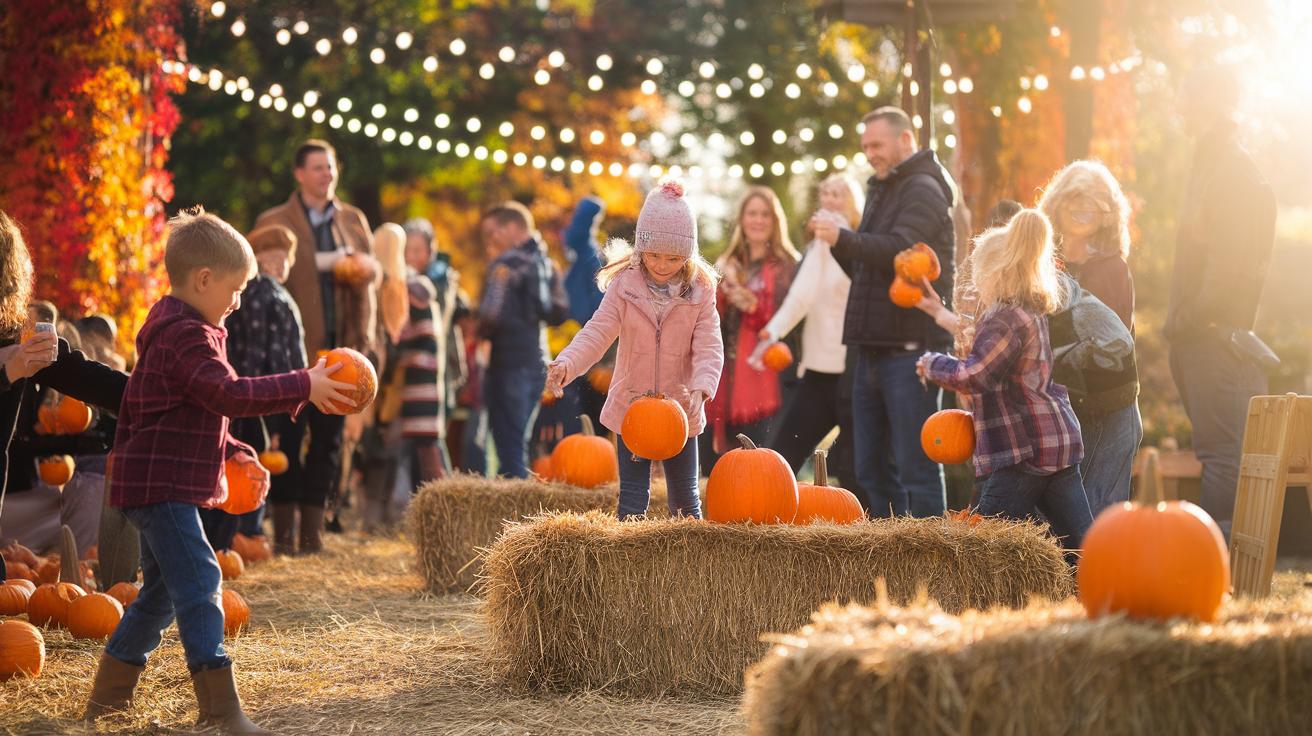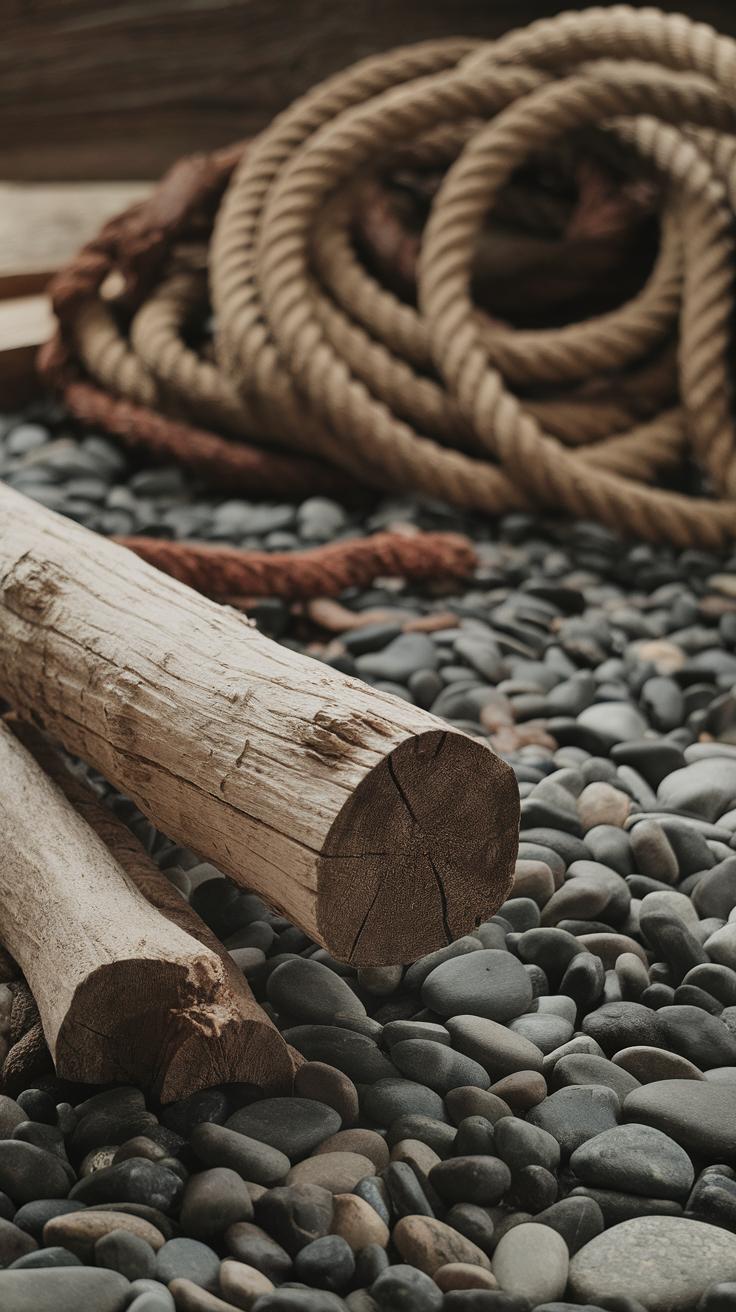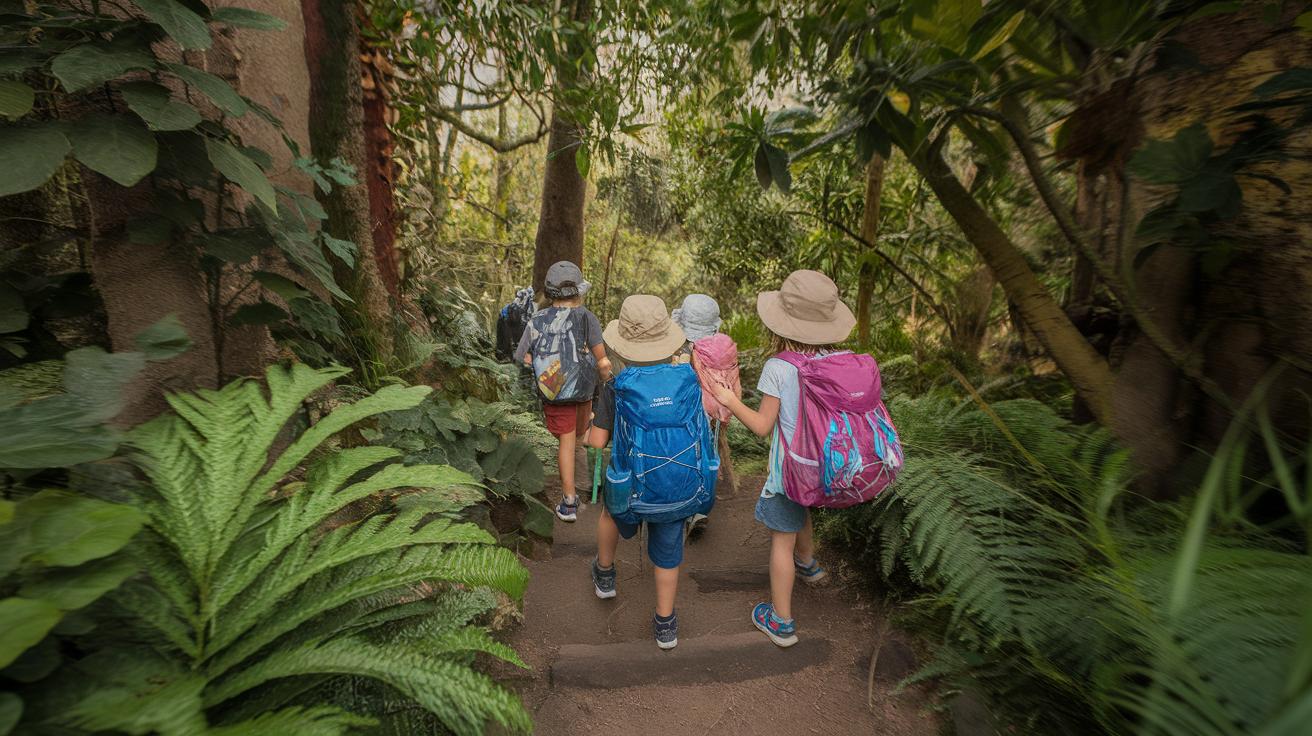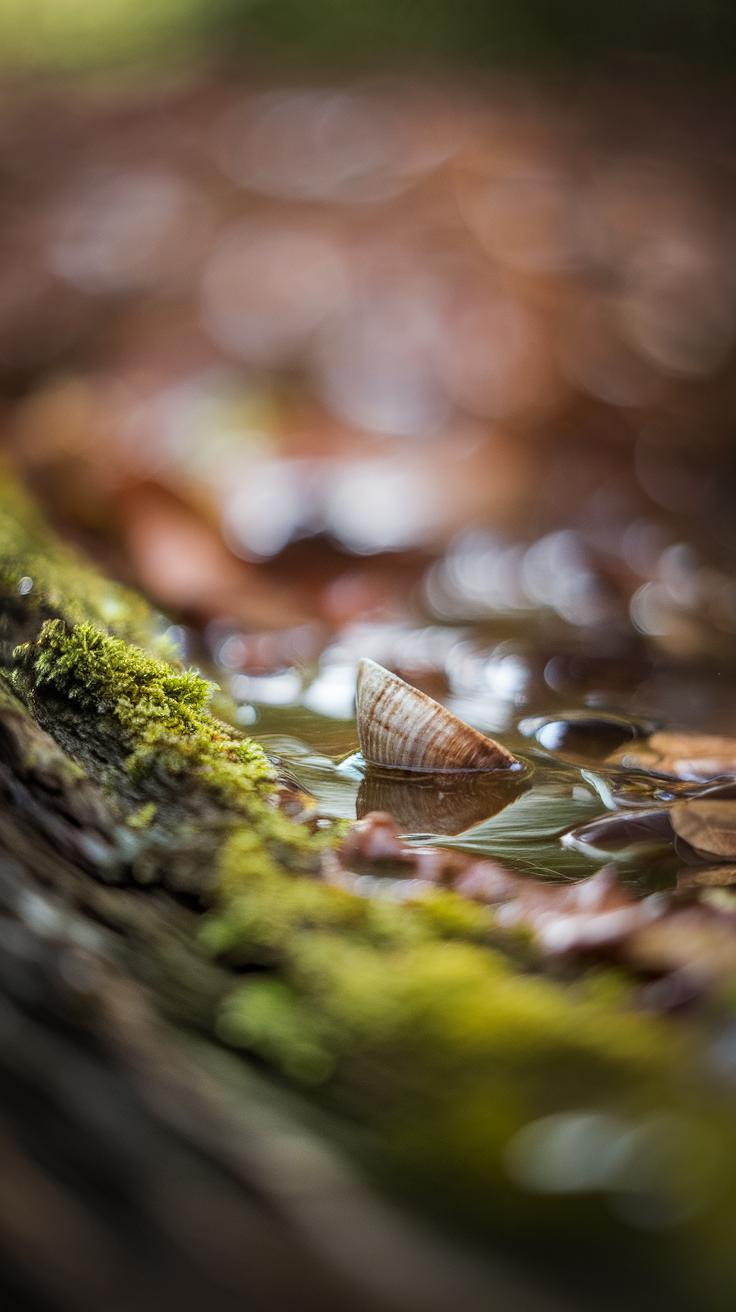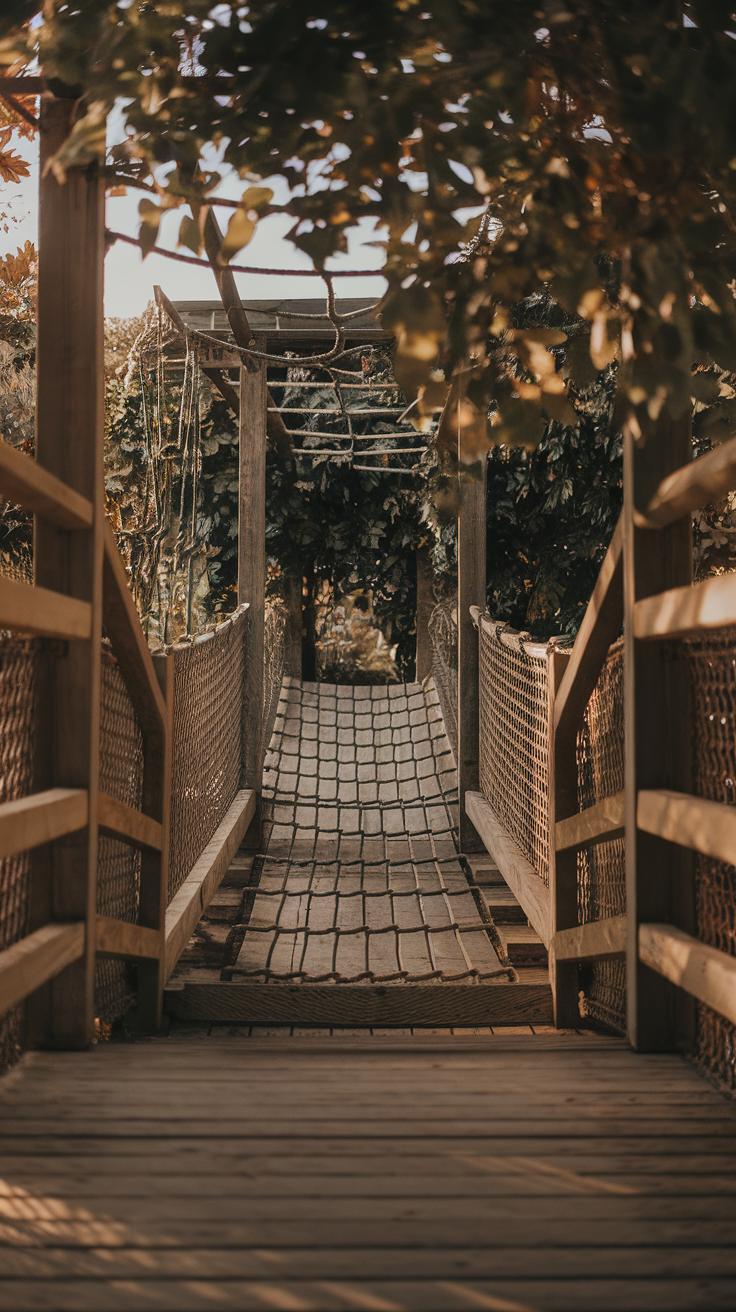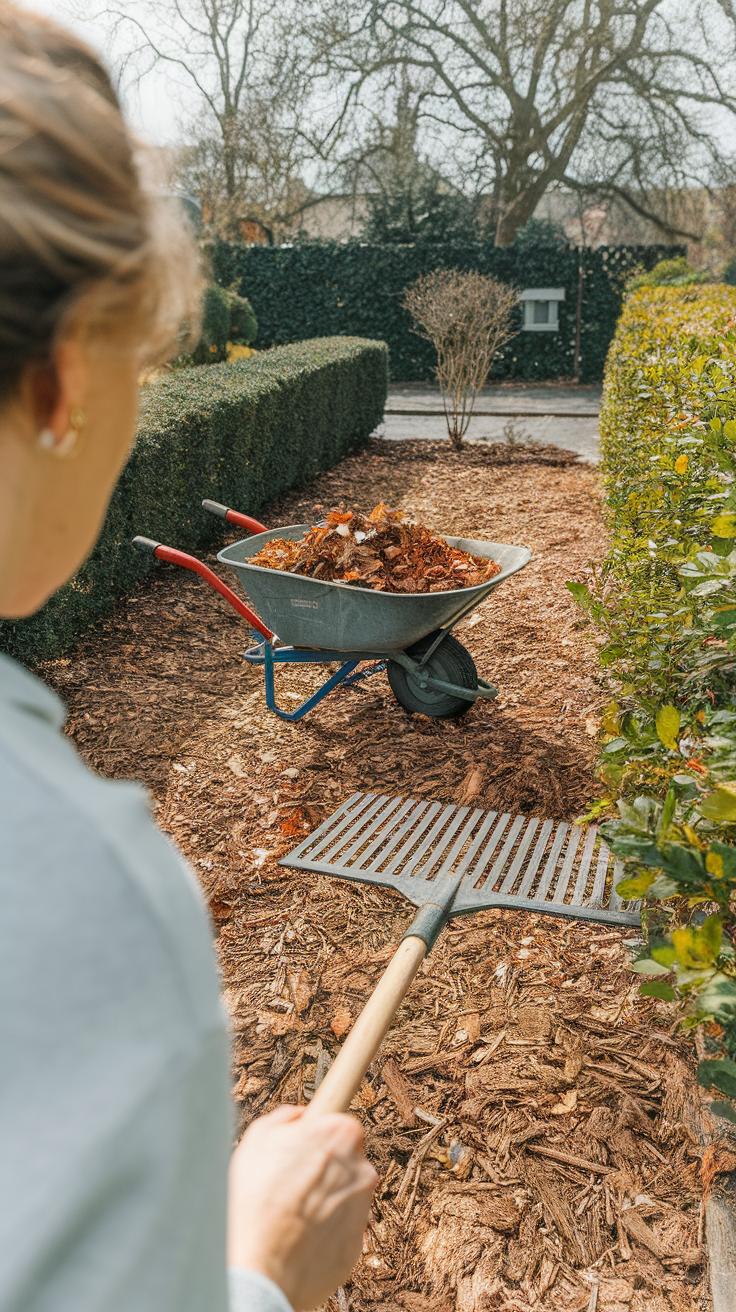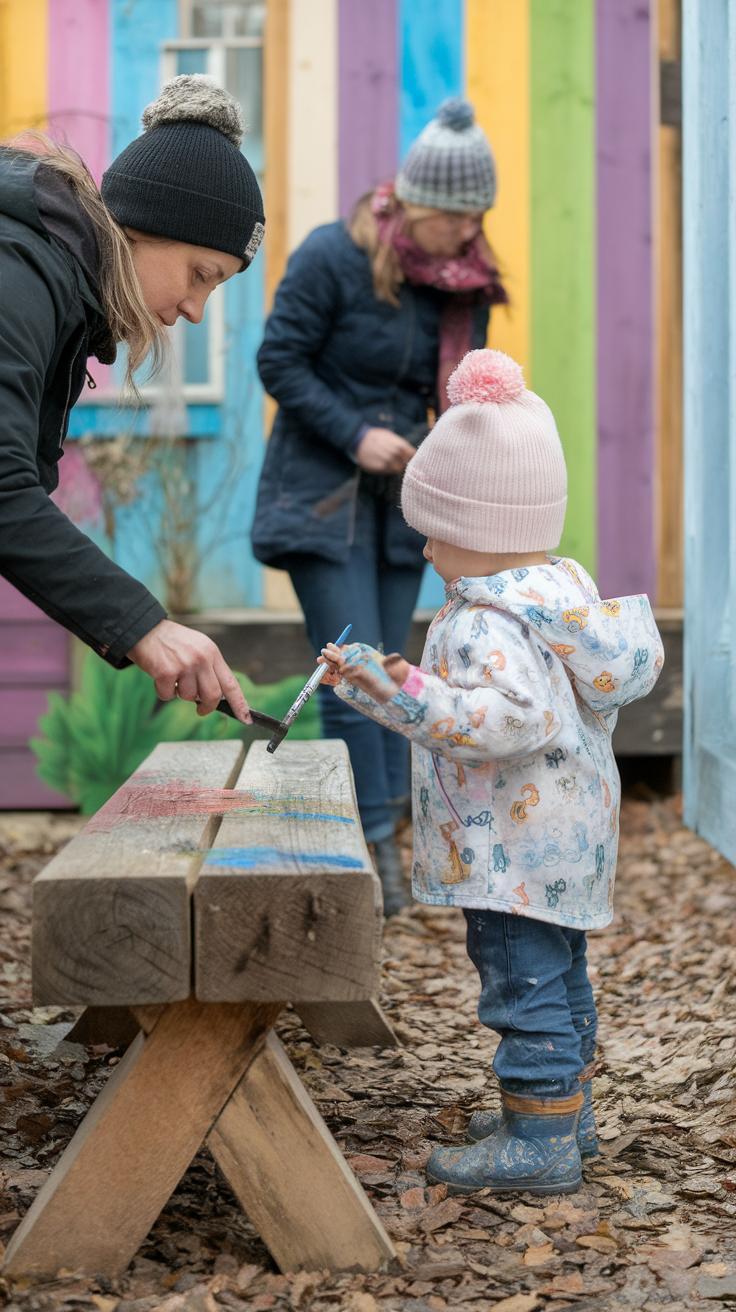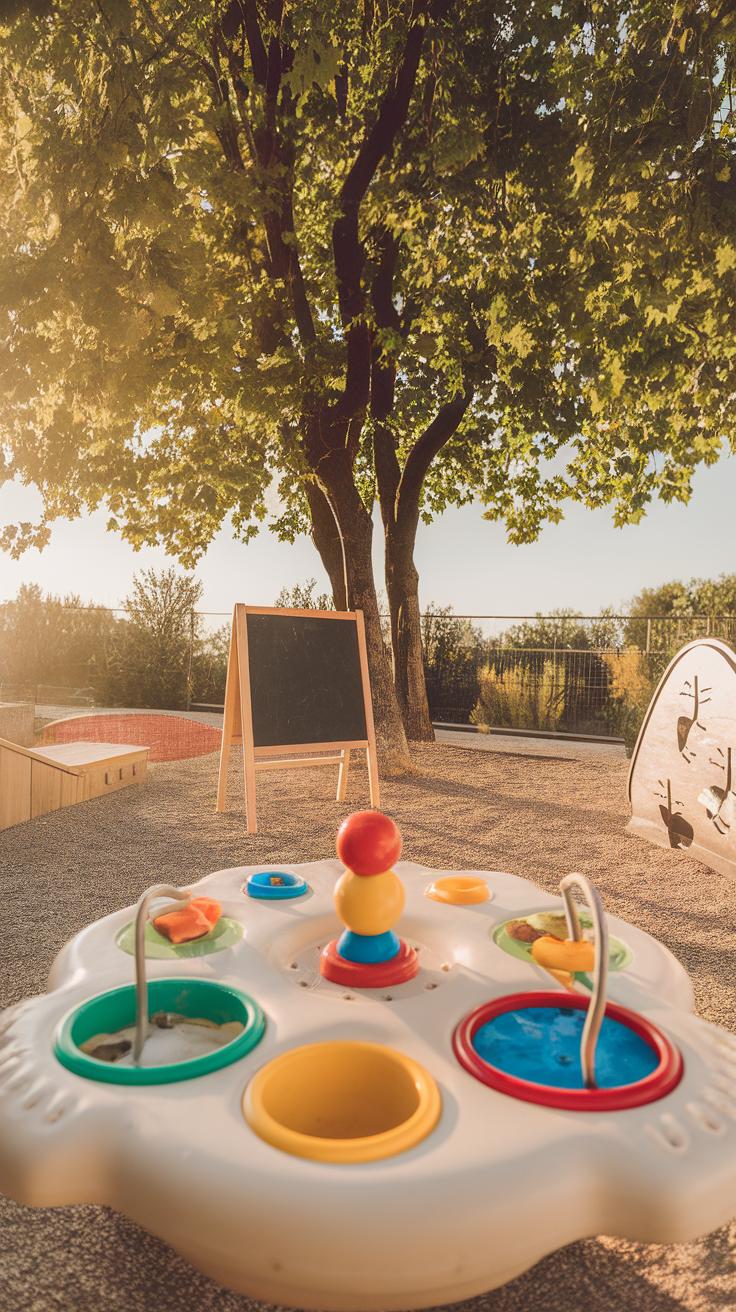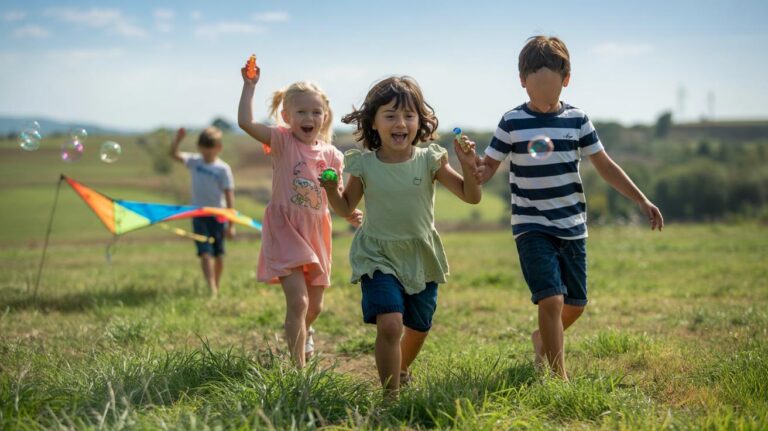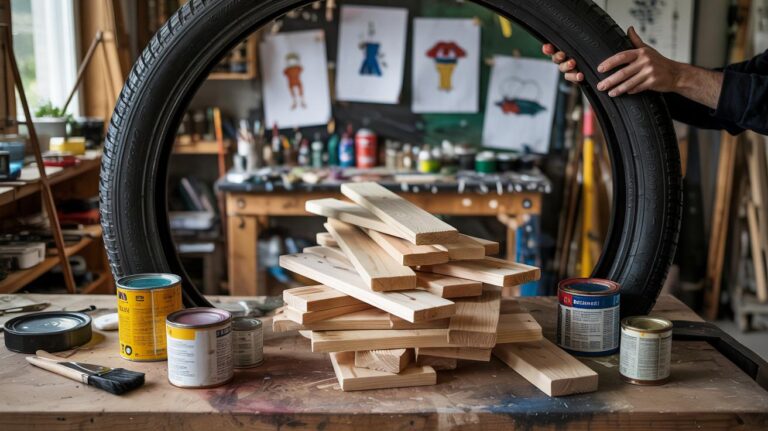Introduction
Natural play spaces offer children a chance to connect with the environment while being active and creative. These spaces use natural materials like wood, plants, and stones to build play areas that inspire imagination and physical activity. Such play environments can bring many benefits, such as improving a child’s motor skills and encouraging healthy social interaction. You can turn your yard into one of these inviting spaces by following practical steps tailored to your outdoor area. This article covers what natural play spaces are, why they matter, and how to design one that suits your yard.
Creating these play areas involves more than just laying down some plants or wooden structures. It is about encouraging children to explore their surroundings and learn through movement and discovery. By integrating natural features, you provide a varied play setting that changes with the seasons and sparks curiosity. You will find advice on choosing the right materials, planning safe layouts, and involving children in the design process. This guide will help you build a yard that promotes outdoor play and supports your child’s growth every day.
Understanding Natural Play Spaces
A natural play space uses materials you find in nature, such as wood, plants, water, and stones. It avoids plastics and metal structures often seen in traditional playgrounds. Instead of slides or swings made in factories, these spaces invite children to interact with real elements like logs, sand, or leaves.
Playing in natural environments provides more than just fun. It helps children use their senses fully—touching rough bark, smelling fresh flowers, and hearing birds. These experiences boost creativity as kids use loose parts to build and imagine new games. Physical activity here involves climbing over rocks or balancing on tree stumps, which strengthens muscles and improves coordination.
Natural play spaces encourage kids to work together and solve problems. Asking yourself how your yard can offer these kinds of sensory and active experiences is a great first step toward transforming it.
What Makes a Play Space Natural
A natural play space features items from the environment, such as wooden logs, stones, sand, plants, and flowing water. These materials have textures, shapes, and smells that change with the seasons. Children can stack sticks, dig soil, or splash water.
Unlike plastic or metal playgrounds, which often have fixed shapes and bright colors, natural spaces change over time. This variety offers new challenges and surprises. The softness of mulch or grass provides safer landings compared to hard surfaces. Natural spaces blend into the landscape, creating a calm and inviting place to play.
Think about what natural elements are around your home and how you can include them in a play design that feels alive and adaptable, not fixed or artificial.
Benefits for Children
Playing in nature helps children sharpen motor skills like climbing, running, and balancing. They practice moving their bodies in different ways as they explore uneven ground and natural obstacles.
The variety of textures and sounds supports sensory development. Feeling rough bark, wet mud, or cool stones teaches kids about their environment in a hands-on way.
Natural play encourages social interaction. Children negotiate roles in games, share tools like buckets and shovels, and create stories together. This improves communication and cooperation skills.
Imagination also grows in these open-ended spaces. Without preset games, children invent their own adventures using materials around them. Ask yourself how your yard could foster this kind of creative play.
Assessing Your Yard for Natural Play Potential
Start by looking closely at your yard. How much space do you have available for a play area? Even small yards can fit creative natural play features.
Notice where sunlight hits most. Children often enjoy sunny spots for active play, but some shaded areas offer cool retreats. Think about how these areas could support different types of play or rest.
Check the soil condition. Is it mostly hard-packed dirt, sandy, or rich with organic matter? Good soil supports plant growth, which is key for natural play elements like gardens or digging spots.
Look at the plants already growing. Trees can create shade and climbing opportunities. Bushes might offer hiding places. Could any existing vegetation be integrated into your plan?
Ask yourself: What inspires you about this space? Can it become a learning place where your kids connect with nature and explore safely?
Surveying Your Outdoor Space
Begin measuring your yard precisely. Use a tape measure and sketch a simple map to scale. Mark boundaries, fixed structures, and notable features.
Divide the map into sunlit and shaded zones by observing the yard throughout the day. How does light move? Which areas stay cool or warm?
Identify any unsafe spots. Are there steep slopes, thorny bushes, or sharp objects? Mark these clearly. Plan to keep play areas free from hazards.
Think about pathways and access too. Can children move between zones easily? Mapping helps you visualize where natural elements might fit and guides safe play design.
Soil and Plant Considerations
Soil quality affects how well plants will grow and how safe some natural play features will be. Loose, fertile soil encourages gardens and digging spots. Hard soil may need loosening or amendment.
Test your soil if possible. Local garden centers often provide kits or advice. Knowing pH and texture guides plant selection and care.
Choose plants that suit your soil and climate. Native species tend to be hardy and require less care. Avoid toxic or thorny plants near play areas to keep kids safe.
Healthy plants can create natural shade, sensory experiences, and climbing spots. They can balance soft and hard play surfaces for variety and comfort.
Designing Your Natural Play Space Layout
Planning your natural play space means thinking about how your yard will work for kids of different ages and interests. Divide your yard into clear areas that invite various kinds of play and discovery.
Think about zones for running and climbing, quiet spots for reading or observing nature, and places where children can get creative. Imagine a corner with logs and stumps for climbing, a small garden patch for planting, and a shaded nook for storytelling or relaxing.
Ask yourself what your children enjoy most and how much space each activity needs. Where can bugs be observed safely? How will sunlight and shade shift during the day? These factors help you position each zone thoughtfully.
Keeping safety and accessibility in your plan is key. Leave enough room for free movement and arrange zones so children can move easily from one area to another.
Creating Zones for Various Activities
Different activities call for different settings. Set aside space for imaginative play with natural props like sticks, stones, and leaves. Kids can create forts or pretend kitchens here.
Create an area for physical activity using logs, balance beams, or natural climbing structures. Space for running or jumping helps children develop strength and coordination.
Include a quiet zone with benches or soft grass where kids can rest, watch wildlife, or read. This invites calm moments in the midst of busy play.
Don’t forget gardening zones. Raised beds or small patches offer hands-on experience with plants and insects, encouraging curiosity about nature.
Ensuring Safety and Accessibility
Design paths with smooth, firm surfaces like packed dirt or mulch to prevent trips and make walking easier for all children. Pathways should be wide enough to allow an adult to walk alongside a child.
Choose play surfaces that reduce injury risk, such as wood chips or pea gravel under climbing areas. Avoid hard surfaces close to swings or slides.
Place play structures thoughtfully, away from hazards like water or drop-offs. Check that edges are rounded and materials are non-toxic and stable.
Consider children with limited mobility. Raised garden beds and low platforms allow access, and gentle slopes replace steep steps whenever possible.
Choosing Natural Materials That Last
Your natural play space needs materials that stand up to weather and kids’ energy. Choosing the right ones keeps your yard safe and low-maintenance over time. Think about durability first. Wood, stone, plants, and other natural elements must resist moisture, sun, and rough play without breaking down or causing harm.
Wood treated without harsh chemicals works well for climbing structures or benches. Stone offers a firm foundation or stepping surfaces. When selecting plants, avoid toxic varieties to protect children during exploration. Logs, sand, and water features give tactile experiences and change with the seasons.
Would you prefer materials that age gracefully or ones that stay looking new? What maintenance are you ready to handle? Make material choices that fit your lifestyle and keep your children’s safety front and center.
Wood and Stone
Look for wood like cedar, redwood, or black locust. These resist rot and insects naturally and hold up outdoors without chemical treatments. Avoid pressure-treated wood with harmful chemicals, and sand rough edges to prevent splinters.
Stone gives solid surfaces for balancing or seating. Choose smooth river rocks or flagstone for safety and stability. Avoid sharp or crumbly stones that can break or cause injuries. Consider placing stones securely to prevent wobbling underfoot.
Wood and stone fit together well in natural play areas. Both last for years when selected wisely. How will you combine these materials to create textures and levels that invite climbing and imaginative play?
Plants and Natural Elements
Select plants known for non-toxicity and resilience. Taller grasses, native wildflowers, and soft shrubs create interesting textures and hiding spots. Check local guides to avoid plants toxic to children.
Incorporate logs for seating or balancing, sand for digging, and small water features like a shallow pond or stream. These elements engage kids’ senses and encourage active play. Use fallen branches or stumps to add variety and change as your garden grows.
Think about how each plant and natural item will fit in the play area. Will it be safe to touch, climb on, or move? Balancing growth with safety helps your yard become a natural adventure playground built to last.
Incorporating Natural Elements for Sensory Play
You can use natural elements to engage children’s senses and support hands-on learning. Changing textures, colors, and sounds in your yard encourages kids to explore and discover how nature feels and sounds. Sensory play helps children develop fine motor skills, attention, and creativity while connecting with their environment.
Using plants with different shapes and finishes adds layers to the sensory experience. For instance, soft moss, rough bark, and smooth leaves give children opportunities to touch and compare textures. Water offers a chance to engage with movement and temperature, creating calm or playful moments. When you add natural sounds like wind rustling leaves or gentle water flows, you provide auditory stimulation that sparks curiosity.
Ask yourself: What natural sensations are missing from your yard that children might enjoy? What sensations might inspire their learning and play? Tailoring natural elements to sensory play creates a rich outdoor classroom that fits your space and your child’s interests.
Using Plants and Textures
Plants can bring a variety of colors and textures to your play space. Choose leaves that vary from smooth and shiny to fuzzy or spiky, inviting kids to feel the differences. Bark pieces or logs with rough textures offer something sturdy to touch or climb on. Grouping herbs like rosemary, thyme, or mint provides scents and interesting leaf shapes to explore.
Adding fallen leaves, pinecones, or flower petals to sensory bins or outdoor play areas introduces seasonal changes and natural variety. These elements invite children to create, sort, and observe, building curiosity. Mixing evergreen needles with soft grass patches offers contrasting tactile zones that make the space more engaging.
Consider layering materials in your pathways or play zones to encourage barefoot walks. Which plants could you add to offer distinct touch experiences? Your choices influence how children connect with nature every time they play.
Water and Sounds
Water can transform your yard into a sensory wonderland. A shallow pond, small stream, or rain garden lets children feel flowing or still water, watch reflections, and hear gentle splashes. Water play supports learning about cause and effect, volume, and temperature.
Sounds also invite attention. Wind chimes made from natural materials like bamboo or shells bring soothing tones when the breeze blows. Collect dry leaves or seed pods that rustle with movement, adding natural sounds with no need for electricity or batteries. You might even construct simple sound stations with hollow logs or stones for drumming or tapping.
Imagine how natural water sounds and changing breezes could invite calm moments or active play. What sounds occur naturally in your yard, and how could you emphasize them? Small additions can turn your outdoor space into a rich sensory environment that captures children’s focus and imagination.
Building ChildFriendly Play Structures
Creating play structures from natural materials invites children to move, explore, and use their imagination. You can build simple features like balance beams or stepping stones with logs or large rocks. These invite active play and challenge kids to test their strength and coordination.
Start with sturdy, fallen logs arranged on the ground for climbing or balancing. Place flat stones nearby to create jumping paths. These natural materials blend into your yard and offer varied textures and heights to keep children engaged.
Consider how children interact with their environment. Does the layout encourage risk-taking in a safe way? Are parts low enough for younger kids but still exciting for older ones? Planning with these questions helps you design structures that grow with your child’s skills.
Climbing and Balance Structures
Use tree stumps of different heights as stepping posts or platforms. Arrange them in a line or a circle to create varied paths. Kids enjoy moving from stump to stump, improving balance and spatial awareness.
Large rocks make excellent climbing elements. Find smooth, solid stones where children can grip and step safely. Position the rocks close enough to encourage jumping or stepping between them.
Logs serve well as low balance beams or climbing ladders. Secure them firmly to prevent rolling. You might stack thinner branches to form small climbing walls. These natural challenges inspire physical activity and build confidence.
Creative Play Features
Branches and leafy plants offer perfect materials for dens or forts. Build a simple frame with thick sticks and weave thinner branches or vines for walls. This creates cozy spaces that children can decorate, sparking storytelling and imaginative play.
Tunnels crafted from arched branches or low brush invite children to crawl and explore safe hideaways. You can enhance these structures seasonally with leaves or flowers to keep the space fresh and exciting.
Allow kids to personalize these features. Give them tools like ropes, fabrics, or small planks to modify and rebuild their forts. This involvement boosts creativity and gives play areas a unique, ever-changing character.
Maintaining Your Natural Play Space
Keeping your natural play space safe and inviting means checking it often. Look for loose branches that could fall and sharp edges on wood or rocks that might hurt children while they play. Watch for any plants that grow too close to paths or play areas, causing tripping hazards or blocking movement. Taking time to prune or remove these helps prevent injuries.
Insects and animal activity can affect your space too. Check for nests or insect hives near play zones. You want to keep the area safe but still friendly to wildlife that adds to the natural feel.
Regular Safety Checks
Inspect play structures and natural elements monthly. Are branches stable and secure? Do wooden parts show signs of splintering or decay? Look closely at tree roots or rocks that children might trip over. Check if plants are growing into fences or pathways, making the area hard to navigate or unsafe. Clear away fallen leaves or sticks that create slippery conditions after rain.
Keep an eye on any water features. Is water clean and flowing? Stagnant water can attract insects and cause risk. Simple fixes like adding a small pump or draining excess water help maintain safety. Questions to ask: What parts of your play space might cause harm if left untouched? How often do you think you’ll need to inspect these?
Seasonal Care
Each season demands particular attention. In spring, clear winter debris and prune plants to encourage new growth. Check soil around play areas for any erosion or compaction and loosen it if needed. Summer requires watering, especially for young plants, and trimming overgrowth that can block pathways or shade.
Fall means raking leaves and preparing plants for cold weather. Remove dead branches and refresh plant beds with mulch to protect roots. Winter care includes making sure paths are clear of ice and snow where possible and inspecting structures for damage caused by storms. Regular seasonal work keeps your natural play space healthy and safe all year long.
Engaging Children in the Creation Process
Involving children in designing and building your natural play space creates a sense of ownership. When kids contribute ideas and help shape the environment, they value it more. This connection encourages them to care for the space and use it responsibly. It also teaches practical skills like planning and problem-solving. Your child can learn how natural materials work together and discover how choices affect the space’s safety and fun.
Ask children what they want to include. Would they enjoy a small garden, a hideout, or a spot for collecting stones? Their input will guide your planning and make the project meaningful. Making decisions together boosts confidence and inspires creativity. How might your child’s favorite activities influence the play area’s design?
Planning Together
Start by talking with your children about their ideas. Use simple questions like “What would you like to play with outside?” or “What natural features do you want in the yard?” This discussion helps uncover what excites them. Write down their thoughts and sketch rough plans together.
Encourage children to imagine the space from different angles. What feels fun? What looks safe? This shows them how planning affects both enjoyment and protection. You might discover interesting suggestions you hadn’t thought of. How would you adjust your design based on their answers?
Hands-On Building
Give your children tasks suited to their age. Younger kids can help plant seeds or sprinkle water, while older ones may carry stones or arrange logs. Painting rocks or wooden pieces with safe, natural dyes lets them personalize elements.
These activities teach responsibility through action. As they lift, place, or decorate items, children connect with the work involved in creating their play space. This involvement reduces the chance of careless damage later. What simple task could your child do to feel part of the building process?
Maximizing Play and Learning in Your Natural Yard
Encouraging children to use your natural play space often means creating routines that invite them back outside. Consider setting times for play that align with the family’s schedule, making outdoor activity a regular part of the day. You can also keep the space dynamic by changing small features seasonally, such as adding a butterfly garden in spring or building a snow shelter in winter. These shifts spark curiosity and invite exploration.
Design corners for quiet observation or group interaction to meet different play styles. A simple nature journal corner, with pencils and paper, lets kids track their discoveries. Adding natural elements like logs or rocks in circles encourages social play and conversation. How can you make the space feel welcoming every day? Small changes and clear routines help make outdoor play a natural habit for your family.
Organizing Playtime Activities
Games that use natural features help children move their bodies and work with others. You might try “Nature Scavenger Hunt,” where kids search for leaves, stones, or feathers. This activity sharpens their observation and teamwork. Another option is “Build a Fairy House” using twigs, moss, and pinecones. It encourages creativity and manual skills. Climbing on safe boulders or balancing on logs improves physical coordination.
Invite children to create their own games involving the natural tools around them. Can they invent a way to use a stick and stones for a new game? Team activities like passing a “nature ball” made of leaves encourages sharing and cooperation. How can you mix free play with guided games that help children learn new skills while having fun?
Pairing Play with Nature Education
Use the natural play space to teach simple science lessons. Show your children how ants build tunnels or identify different flowers. These moments turn playtime into learning chances. You can keep a collection of leaves and talk about the types of trees. Find a patch of dirt and examine what bugs live there. This hands-on learning helps children understand ecosystems and the role each creature plays.
Ask questions that prompt thinking, like “Why do you think this plant grows here?” or “What do ants eat?” Introducing small experiments, such as observing how sunlight affects plant growth, also deepens understanding. How can you turn everyday play into a chance to explore the natural world more closely? Using your yard as a classroom helps children build respect for their environment while they play.
Conclusions
Natural play spaces transform simple yards into vibrant places where children learn and play safely. The use of natural elements creates a dynamic environment that changes over time and offers diverse experiences. This approach supports physical activity, creativity, and connection to nature, which are essential for child development. When you design these spaces thoughtfully, they can fit any yard size and style. Your involvement in planning and creating the space increases its value and ensures it meets your child’s needs.
By following the methods discussed, you can make your outdoor area inviting and functional for play. The benefits will go beyond entertainment, helping children build confidence and social skills as they interact with their natural surroundings. As your yard evolves with added plants, natural structures, and open space, it becomes a lasting place where your family can enjoy nature daily. Are you ready to take the first step and start planning your own natural play space?

